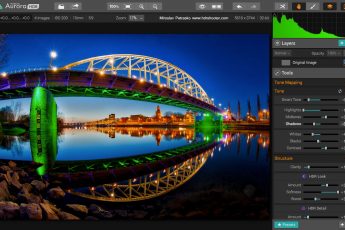The tilt-shift lens became my favorite lens almost immediately after I bought it, so today I will share with you how to use one. There are two main functions, the tilt, and the shift, today we will look at shift one.

What is shifting?
Shifting is moving the front of the lens up/down or left/right, without moving the camera. Like this, you can completely change what the camera sees, without needing to move it all. Let’s look at an example here. These four shots have been done from the same spot, just shifting the lens.
As you can see, shifting a lens moves what you see by about 40% of the photo. There is a bit of distortion, but much less than if you moved the camera.
Correcting perspective distortion
The main use of shifting is to get rid of perspective distortion. You probably had a situation when you were trying to take a photo of something taller and you had to tilt your camera up to get it whole into the frame. The result of this is of course that all the vertical lines in the photo will start to fall toward the center, the more you tilt your camera.
Here you see an illustration of this. First tilting. As you can see, the field of view changes, to what you need, but a lot of perspective distortion is introduced with it.
Now let’s look at how it is with the tilt-shift lens. When you shift, the field of view changes, but the camera stays level. Like this, no perspective distortion is introduced into the photo, and all verticals stay at a right angle with the horizon.
Since you are shifting instead of tilting, you can take photos of taller structures without any distortions, and also take shots while being much closer to the object.
Here is a photo with a normal lens tilted up, and with the tilt-shift lens.
Panoramas/Vertoramas
Another situation where perspective distortion can cause problems is when you are taking panoramas or vertoramas. Each time you rotate or tilt the camera, you are introducing distortions, which makes the combining more difficult. with a tilt-shift, you can take all the shots without ever moving the camera. Let’s looks fist at a panoramic example:
Here I took two photos, one shifted left, and one shifted right. These then perfectly fit together when aligned. Or here is a vertorama example. Again taking the photos while shifting up to get the whole scene.
Moving the camera location
The last thing that it’s really useful for, is a way of moving the camera position, without moving the camera itself. What I mean by this is, that when you shift the lens, it looks like it moved the whole camera.
Let’s imagine a situation, where you stand on the edge of something and you just can’t move the camera further out. What to do now, when you want the view to be from there? You shit the lens, so getting the view from further out that you can move to. Same when you standing on top of something, and you would want the view to be even from higher up and similar.
This lens gives you views that normally would not be possible at all.
That’s all about the shift function of this lens, next time I will take a look at the tilt function.













Leave a Comment